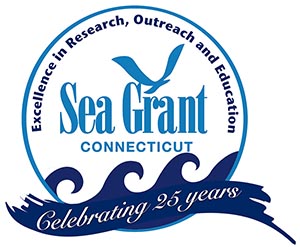 SILVER SPRING, MD, JANUARY 16, 2014 – Connecticut Sea Grant, New Jersey Sea Grant, and New York Sea Grant have awarded funds totaling $1.4 million to support ten social science research projects to improve community understanding and response to coastal storm hazard information as part of NOAA Sea Grant’s Coastal Storm Awareness Program.
SILVER SPRING, MD, JANUARY 16, 2014 – Connecticut Sea Grant, New Jersey Sea Grant, and New York Sea Grant have awarded funds totaling $1.4 million to support ten social science research projects to improve community understanding and response to coastal storm hazard information as part of NOAA Sea Grant’s Coastal Storm Awareness Program.Despite the unparalleled accuracy of the forecast for Post Tropical Cyclone Sandy, too many coastal residents either failed to fully understand the severity of the storm and the dangerous conditions it would produce, or chose not to evacuate in spite of the serious risks of staying in their homes. The awarded projects will study community response to disasters by closely examining the coastal storm warning systems, the information conveyed (what to expect, when to expect it, and what do) and the factors that affect whether recipients of this information decide to act on it. The results of this research will improve the communication of coastal hazards to both the general community and to community leaders.
This national competition drew on the decades of experience within NOAA and Sea Grant as well as the well-earned reputation for credibility and trust of the Sea Grant outreach communities in New York, New Jersey and Connecticut. By combining Sea Grant’s established relationship within local communities with current social science research, this effort will be able to maximize awareness and understanding of the true severity of coastal hazards – even amongst hard to reach, isolated groups within communities.
Sea Grant’s CSAP is a part of the Disaster Relief Appropriations of 2013 (DRA), commonly referred to as the Sandy Supplemental. DRA provided supplemental appropriations to the NOAA to improve and streamline disaster assistance associated with Post-Tropical Cyclone Sandy, and for other purposes. In addition to recovering and rebuilding infrastructure from the devastation of Sandy, NOAA will conduct a coordinated program of activities to improve NOAA information and services for decision makers, communities, and the public in preparation for, response to, and recovery from other high-impact events. The results of these efforts will contribute to NOAA’s vision of resilient ecosystems, communities, and economies.
 SILVER SPRING, MD, JANUARY 16, 2014 – Connecticut Sea Grant, New Jersey Sea Grant, and New York Sea Grant have awarded funds totaling $1.4 million to support ten social science research projects to improve community understanding and response to coastal storm hazard information as part of NOAA Sea Grant’s Coastal Storm Awareness Program.
SILVER SPRING, MD, JANUARY 16, 2014 – Connecticut Sea Grant, New Jersey Sea Grant, and New York Sea Grant have awarded funds totaling $1.4 million to support ten social science research projects to improve community understanding and response to coastal storm hazard information as part of NOAA Sea Grant’s Coastal Storm Awareness Program. SILVER SPRING, MD, JANUARY 16, 2014 – Connecticut Sea Grant, New Jersey Sea Grant, and New York Sea Grant have awarded funds totaling $1.4 million to support ten social science research projects to improve community understanding and response to coastal storm hazard information as part of NOAA Sea Grant’s Coastal Storm Awareness Program.
SILVER SPRING, MD, JANUARY 16, 2014 – Connecticut Sea Grant, New Jersey Sea Grant, and New York Sea Grant have awarded funds totaling $1.4 million to support ten social science research projects to improve community understanding and response to coastal storm hazard information as part of NOAA Sea Grant’s Coastal Storm Awareness Program.